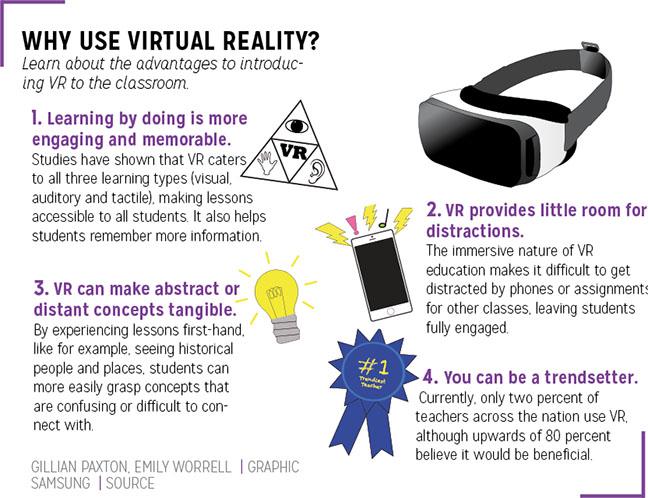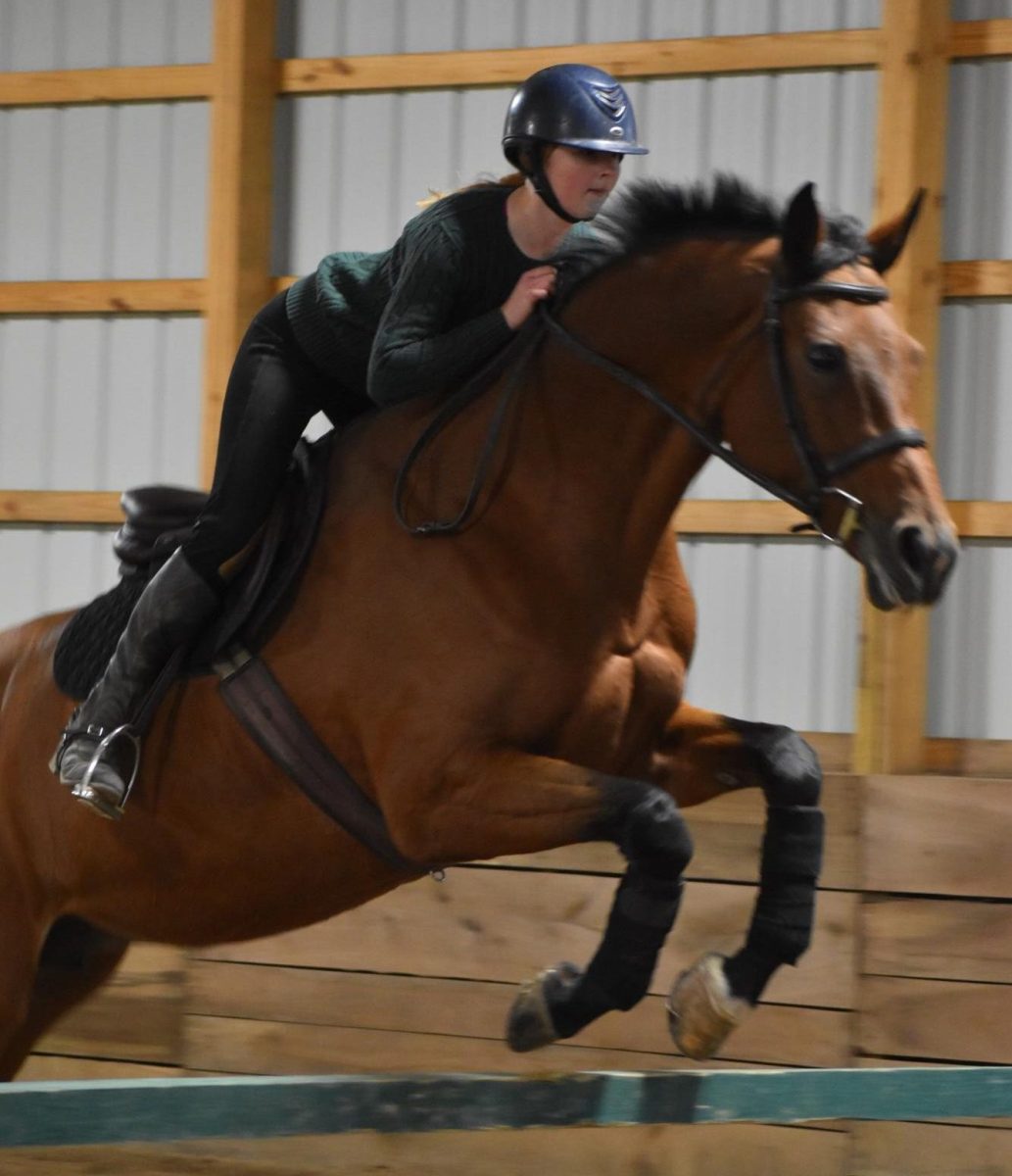Immersed in a game called “The Solus Project,” I was enthralled in the level of narrative and problem-solving in the game. Through this immersive experience, the benefits are far more than just an experience. It’s a way to grow. By using a human-centered design of storytelling, the player is able to take risks and make decisions, improving the understanding of the world around them. On the plus side, Virtual Reality (VR) is also a bit addicting. Being in a virtual world with countless things to learn, VR will be the future of education. It will be the future of storytelling. VR allows storytelling to take the next leap forward as it can fully transport audiences into the world of their narrative.
Currently, VR seems like a medium for simulation—a medium where people can travel to other locations, play with weapons without any real consequences and a place where people can create experiences. As I started playing games in VR, I realized while VR can be used for creating experiences, it offers something more valuable. As more and more game developers are coming to terms with VR, they are understanding VR will become one of the best mediums for storytelling. Present in human cultures for ages as an oral process before the advent of writing, storytelling captures pictures, images, and, most importantly, feelings. Over time, these campfire tales have led to an evolution of stories, taking advantage of the technology at hand. As storytelling mediums have evolved, first with cuneiform writing to now with video games and film, the storytelling industry continues to grow.
VR is at the start of its reign in technology media. With so much potential for storytelling, game designers and cinematographers are figuring out how VR will play a role in redefining conventional methods of storytelling. As storytelling has evolved in the past, it will evolve now as well. The question is, how will that take place now and into the coming years? The problem many designers currently face is the fundamental changes in storytelling in VR. As storytelling exhibited itself orally in the past, the structure of storytelling was linear. There was a beginning, middle and end. With radio and cinema, this convention of storytelling carried over, leading to the stigma of linear storytelling. Now video games and VR are starting to challenge that convention. VR introduces an immersive simultaneous narration, a nonlinear form of storytelling which games have embraced for the past 10 years.
I never would have thought storytelling and narratives to be the apex form of VR before I used it. With VR’s ability and great capacity for storytelling, I hope it will become a medium that will allow people to step into a different perspective. VR allows storytelling to take the next leap forward as it can fully transport audiences into the world of their narratives.
The views in this column do not necessarily reflect the views of the HiLite staff. Reach Shiva Vallabhaneni at [email protected].


































![British royalty are American celebrities [opinion]](https://hilite.org/wp-content/uploads/2024/03/Screenshot-2024-03-24-1.44.57-PM.png)


















![Review: “Suits” is a perfect blend of legal drama and humor [MUSE]](https://hilite.org/wp-content/uploads/2024/04/unnamed-1.png)
![Chelsea Meng on her instagram-run bracelet shop [Biz Buzz]](https://hilite.org/wp-content/uploads/2024/04/IMG_2446-1200x838.jpg)
![Review: Quiet on Set: The Dark Side of Kids TV is the long awaited exposé of pedophilia within the children’s entertainment industry [MUSE]](https://hilite.org/wp-content/uploads/2024/04/unnamed.jpg)
![Review: “The Iron Claw” cannot get enough praise [MUSE]](https://hilite.org/wp-content/uploads/2024/04/unnamed.png)
![Review: “The Bear” sets an unbelievably high bar for future comedy shows [MUSE]](https://hilite.org/wp-content/uploads/2024/03/unnamed.png)
![Review in Print: Maripaz Villar brings a delightfully unique style to the world of WEBTOON [MUSE]](https://hilite.org/wp-content/uploads/2023/12/maripazcover-1200x960.jpg)
![Review: “The Sword of Kaigen” is a masterpiece [MUSE]](https://hilite.org/wp-content/uploads/2023/11/Screenshot-2023-11-26-201051.png)
![Review: Gateron Oil Kings, great linear switches, okay price [MUSE]](https://hilite.org/wp-content/uploads/2023/11/Screenshot-2023-11-26-200553.png)
![Review: “A Haunting in Venice” is a significant improvement from other Agatha Christie adaptations [MUSE]](https://hilite.org/wp-content/uploads/2023/11/e7ee2938a6d422669771bce6d8088521.jpg)
![Review: A Thanksgiving story from elementary school, still just as interesting [MUSE]](https://hilite.org/wp-content/uploads/2023/11/Screenshot-2023-11-26-195514-987x1200.png)
![Review: When I Fly Towards You, cute, uplifting youth drama [MUSE]](https://hilite.org/wp-content/uploads/2023/09/When-I-Fly-Towards-You-Chinese-drama.png)
![Postcards from Muse: Hawaii Travel Diary [MUSE]](https://hilite.org/wp-content/uploads/2023/09/My-project-1-1200x1200.jpg)
![Review: Ladybug & Cat Noir: The Movie, departure from original show [MUSE]](https://hilite.org/wp-content/uploads/2023/09/Ladybug__Cat_Noir_-_The_Movie_poster.jpg)
![Review in Print: Hidden Love is the cute, uplifting drama everyone needs [MUSE]](https://hilite.org/wp-content/uploads/2023/09/hiddenlovecover-e1693597208225-1030x1200.png)
![Review in Print: Heartstopper is the heartwarming queer romance we all need [MUSE]](https://hilite.org/wp-content/uploads/2023/08/museheartstoppercover-1200x654.png)






















![Review: Ladybug & Cat Noir: The Movie, departure from original show [MUSE]](https://hilite.org/wp-content/uploads/2023/09/Ladybug__Cat_Noir_-_The_Movie_poster-221x300.jpg)

![Review: Next in Fashion season two survives changes, becomes a valuable pop culture artifact [MUSE]](https://hilite.org/wp-content/uploads/2023/03/Screen-Shot-2023-03-09-at-11.05.05-AM-300x214.png)
![Review: Is The Stormlight Archive worth it? [MUSE]](https://hilite.org/wp-content/uploads/2023/10/unnamed-1-184x300.png)








